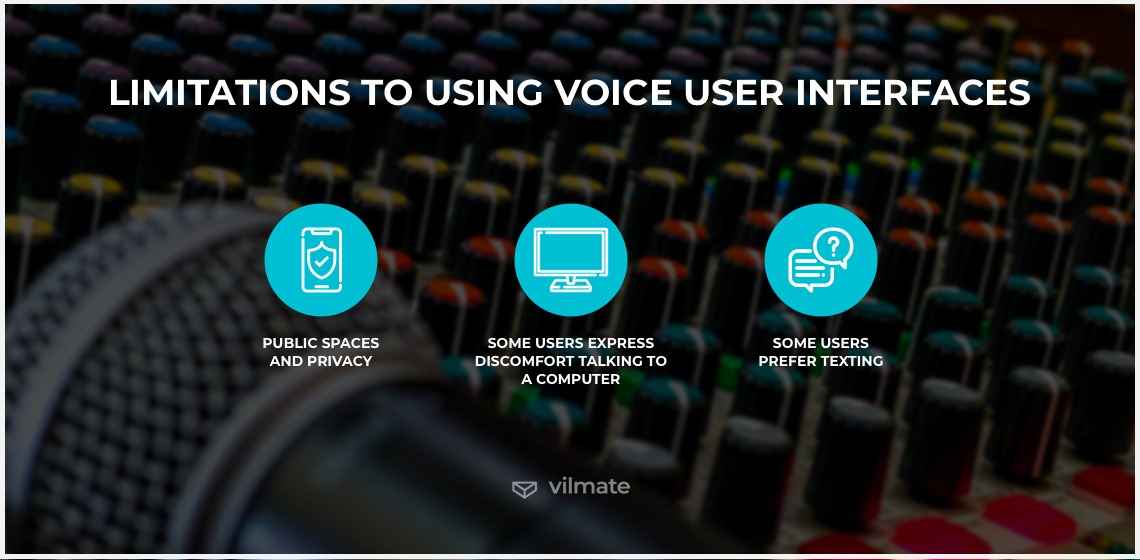
Voice user interfaces for marginalized languages / low-literacy contexts.
"Exploring how voice user interfaces (VUIs) can empower low-literacy populations and speakers of marginalized languages, bridging the digital divide by providing culturally relevant, accessible, and inclusive technology. This article examines the challenges, strategies, applications, and future potential of voice-first systems in healthcare, education, agriculture, banking, and governance, highlighting real-world case studies and community-driven solutions."
✨ Raghav Jain

Introduction
The rapid advancement of artificial intelligence (AI), natural language processing (NLP), and speech recognition technologies has made Voice User Interfaces (VUIs) a vital mode of human-computer interaction. From voice assistants like Siri and Alexa to interactive voice response (IVR) systems in customer service, voice-based interfaces are becoming increasingly mainstream.
However, the true potential of VUIs lies not only in developed, high-literacy, English-dominant societies but also in marginalized languages and low-literacy contexts—settings where written interfaces can act as barriers rather than enablers. For millions of people who cannot read or write fluently, or whose native languages lack strong digital representation, voice-based technologies could serve as a bridge to digital inclusion.
This article explores the opportunities, challenges, and real-world applications of VUIs for marginalized languages and low-literacy populations, examining how they can empower communities, enhance accessibility, and reshape the digital divide.
The Digital Divide and Literacy Barriers
The digital divide is not merely about internet access—it is also about linguistic and literacy accessibility. Globally, over 770 million adults lack basic literacy skills (UNESCO, 2023). Additionally, many communities speak languages that are marginalized in the digital landscape, often absent from major platforms, datasets, or machine learning models.
For example:
- India has over 1,600 languages, yet fewer than 20 are supported by major tech companies.
- Africa hosts more than 2,000 languages, but most voice-enabled technologies support only English, French, Arabic, or Swahili.
- Indigenous languages worldwide are often entirely absent from digital tools.
For these populations, text-based interfaces are inadequate. Voice becomes a natural medium of interaction—more intuitive than typing and more inclusive than requiring literacy.
Why Voice User Interfaces Matter in Low-Literacy Contexts
- Natural Human Communication
- Voice is the most innate form of human interaction. Unlike literacy, which requires years of education, speaking and listening are universal skills.
- Cultural Relevance
- Many marginalized language communities preserve knowledge orally. VUIs align with these traditions by enabling spoken interactions rather than forcing textual literacy.
- Faster Learning Curve
- Low-literate individuals can adopt voice systems much faster than text-based ones, reducing barriers to entry for digital tools.
- Accessibility for Elderly and Differently-Abled
- Elderly populations or those with visual impairments often benefit greatly from voice-first technologies.
- Empowerment in Daily Life
- From accessing government services to controlling smart devices, voice interfaces can directly improve quality of life for marginalized populations.
Core Challenges in Developing VUIs for Marginalized Languages
Despite the potential, building VUIs in marginalized and low-literacy contexts faces multiple challenges:
1. Lack of Training Data
Machine learning models require large datasets for speech recognition. For marginalized languages, such corpora are scarce.
2. Dialectical and Phonetic Diversity
Languages may have multiple dialects with significant variations. For instance, Hindi spoken in Uttar Pradesh differs greatly from that in Rajasthan.
3. Code-Switching and Multilingualism
Many communities seamlessly blend languages (e.g., Hinglish in India). Systems must handle such hybrid speech effectively.
4. Low Technological Representation
Marginalized languages often lack standardized orthography, dictionaries, or prior NLP research.
5. Infrastructure Limitations
Low-income communities may face limited internet access, poor connectivity, or lack of advanced devices. Offline or lightweight VUIs are critical here.
6. Bias in AI Models
Most AI models are biased toward Western, high-resource languages, which reduces accuracy for marginalized languages.
Key Strategies for Effective VUI Development in These Contexts
1. Data Collection Through Community Participation
- Crowdsourcing voice samples from native speakers.
- Partnering with local organizations for language resource creation.
- Using radio broadcasts, oral stories, and folk traditions as training material.
2. Design for Multilingualism
- Building systems that support code-switching.
- Using phonetic models that recognize shared sound patterns across languages.
3. Offline and Low-Bandwidth Support
- Designing lightweight VUIs that can function without constant internet connectivity.
- Enabling caching and local speech recognition to serve remote communities.
4. Context-Specific Interfaces
- Government service bots in local dialects.
- Agriculture or health information systems in rural areas.
- Financial inclusion tools for micro-entrepreneurs.
5. Collaborative Open-Source Models
Projects like Mozilla Common Voice and Masakhane NLP show the power of community-driven open-source approaches for marginalized languages.
6. Ethical and Inclusive Design
- Avoiding reinforcement of gender or cultural biases in voice assistants.
- Ensuring representation of women and minority voices in datasets.
Real-World Applications
1. Healthcare
- Voice-based health information hotlines in rural areas.
- Systems where patients describe symptoms and receive guidance in their local language.
2. Agriculture
- Farmers can ask weather updates or crop advice through local-language VUIs.
- Example: Digital Green has experimented with voice-enabled advisory services for Indian farmers.
3. Education
- VUIs can provide oral learning support for children in low-literacy households.
- Example: Interactive storytelling applications in indigenous languages.
4. Banking and Financial Inclusion
- Voice-based mobile banking for populations unfamiliar with text-heavy interfaces.
- Example: M-Pesa in Kenya exploring localized voice integration.
5. Disaster Response and Governance
- IVR systems that spread information about floods, elections, or vaccinations.
- Helps reach populations without needing literacy.
Case Studies
Case Study 1: IVR in India
Interactive Voice Response (IVR) systems have been used in rural India for health awareness and political mobilization. Platforms like Gram Vaani allow users to share community news in their local dialects.
Case Study 2: Common Voice in Africa
Mozilla’s Common Voice Project is actively collecting voice data in African languages such as Luganda, Kiswahili, and Wolof, empowering developers to build local VUIs.
Case Study 3: Talking Book Project (Ghana)
Nonprofits have developed portable audio devices with voice-based interfaces that deliver health, literacy, and agriculture information in marginalized languages, bypassing literacy barriers.
The Future of VUIs in Low-Literacy and Marginalized Language Contexts
Looking ahead, VUIs can become transformational tools if integrated into local development efforts. The convergence of edge computing, AI, and community-driven language resources may allow offline, low-cost, and accurate voice systems to emerge.
Moreover, policy frameworks need to support linguistic diversity by funding dataset creation, encouraging open-source projects, and mandating inclusivity in AI tools.
If successfully implemented, VUIs can redefine digital inclusion—not as a privilege of literate, wealthy societies, but as a universal right accessible through voice.
Voice User Interfaces (VUIs) are emerging as powerful tools for digital interaction in contexts where literacy is limited and languages are marginalized, and their potential lies not only in enhancing convenience for technologically advanced societies but in bridging profound digital divides for communities historically excluded from mainstream technologies due to linguistic, educational, and infrastructural barriers. The world today still faces staggering literacy gaps, with UNESCO estimating over 770 million adults lacking basic reading and writing skills, while thousands of languages spoken globally remain underrepresented in digital platforms—India alone has over 1,600 languages but fewer than 20 appear widely in voice-enabled technologies, and across Africa most of the 2,000+ languages are overshadowed by English, French, Arabic, or Swahili, leaving indigenous languages digitally invisible. In such contexts, text-based interfaces demand literacy and dominant language fluency, creating barriers for marginalized populations, whereas voice is the most natural human mode of communication, requiring no formal education and aligning with oral traditions that have preserved cultural knowledge for centuries. VUIs can empower low-literate individuals, elderly users, and visually impaired populations by lowering barriers to accessing healthcare, banking, education, and governance services, but realizing this promise involves tackling major challenges such as lack of training datasets, dialectal variation, frequent code-switching between languages, absence of standardized orthography for many tongues, infrastructural limitations in rural areas, and biases in AI models trained predominantly on Western, resource-rich languages. Addressing these challenges requires strategies like community-driven data collection through crowdsourcing of voice samples and oral storytelling archives, designing systems for multilingual realities with code-switch recognition, building lightweight offline-capable VUIs that can function without reliable internet, tailoring interfaces to specific local use-cases such as agricultural advice, health hotlines, or financial inclusion tools, and supporting open-source collaborative projects like Mozilla Common Voice and Masakhane NLP that pool resources for underrepresented languages. The ethical dimension is equally critical, ensuring that datasets include diverse voices across gender and social groups to avoid reinforcing stereotypes, while local participation in design safeguards cultural appropriateness. Applications are already visible: in healthcare, voice-based systems help patients describe symptoms and receive guidance in local languages; in agriculture, farmers can query weather forecasts or pest management advice; in education, interactive storytelling VUIs supplement children’s learning in oral-first households; in banking, voice interfaces allow mobile transactions without requiring text literacy; and in governance, IVR systems spread vital information about elections, disasters, or vaccination drives. Case studies illustrate this impact—Gram Vaani’s IVR in rural India enables community news in local dialects, Mozilla’s Common Voice project is actively collecting African language datasets, and Talking Book devices in Ghana deliver agricultural and health knowledge through audio. Looking to the future, VUIs hold the potential to redefine digital inclusion by transforming marginalized languages into living digital entities, supported by advances in edge computing, low-resource AI models, and open collaboration, though policy frameworks must invest in linguistic diversity, mandate inclusivity in AI development, and foster partnerships between governments, NGOs, and local communities. Ultimately, VUIs are not just technological innovations but instruments of linguistic justice and empowerment, capable of democratizing digital access in ways that align with cultural traditions, oral knowledge systems, and universal human communication, thus ensuring that the digital revolution becomes truly inclusive and global.
Voice User Interfaces (VUIs) are rapidly transforming the way humans interact with technology, particularly in contexts where literacy is limited and languages are marginalized, offering a potential bridge over the significant digital and informational divides that persist globally, as millions of people remain unable to access or benefit from digital tools due to low literacy, lack of education, or the absence of their native languages in mainstream technological platforms; while VUIs like Siri, Alexa, and Google Assistant have gained prominence in high-resource, literate, and English-dominant societies, the true promise of these systems lies in their ability to enable digital inclusion for communities that rely on oral traditions, spoken communication, and local dialects, since voice interaction is fundamentally more intuitive and natural than text-based interfaces, requiring no formal education or literacy and thus providing an accessible entry point for individuals who have historically been excluded from digital services, economic opportunities, and educational resources, and it is estimated that over 770 million adults worldwide lack basic literacy skills, yet thousands of spoken languages across Africa, Asia, and the Americas remain digitally underrepresented, creating a dual barrier of both linguistic marginalization and literacy gaps; in India alone, there are more than 1,600 languages, but fewer than 20 are represented in major technological applications, while Africa has over 2,000 languages, yet the majority of voice-enabled technologies focus primarily on high-resource languages such as English, French, Arabic, or Swahili, leaving indigenous languages effectively invisible in the digital realm, which underscores the importance of developing VUIs that are tailored to local linguistic contexts, culturally sensitive, and capable of handling dialectical variations, code-switching, and phonetic diversity, as many communities routinely blend multiple languages in daily speech, such as Hinglish in India or Spanglish in Latin America, necessitating systems that can accurately recognize hybrid and context-dependent language use; the advantages of VUIs in low-literacy contexts are manifold: they align with oral traditions, reduce barriers to information access, provide faster adoption curves for users, facilitate accessibility for visually impaired or elderly populations, and can empower marginalized individuals to engage with healthcare, education, banking, governance, and agricultural resources, thereby fostering both digital and social inclusion, yet the development of effective VUIs faces significant challenges, including a lack of large-scale, high-quality datasets in marginalized languages, the absence of standardized orthographies, infrastructural limitations in rural and low-income areas such as intermittent internet connectivity or the prevalence of low-end devices, and algorithmic biases that often favor Western, high-resource languages, which can compromise recognition accuracy and user experience; addressing these challenges requires a multifaceted approach, beginning with community-driven data collection, crowdsourcing voice samples, recording oral stories, and leveraging radio broadcasts or folk media to create rich datasets that reflect the linguistic diversity of local populations, while designing systems that can handle multilingualism, code-switching, and dialectal variation, using phonetic modeling and flexible language recognition, as well as developing offline-capable or low-bandwidth VUIs that function effectively in areas with limited technological infrastructure, thereby ensuring that even remote or underserved communities can access digital services; context-specific interface design is also essential, as VUIs must cater to local needs, whether in agriculture, healthcare, education, financial inclusion, or governance, allowing users to query weather information, crop advice, health guidance, or government updates in their native languages without the necessity of reading or writing; open-source projects such as Mozilla Common Voice and Masakhane NLP exemplify the potential of collaborative, community-led initiatives to expand language representation and create inclusive AI models, while ethical considerations are equally critical, ensuring that datasets are diverse in terms of gender, age, and social background to avoid reinforcing stereotypes, biases, or inequalities, and involving local communities in co-design processes to guarantee cultural appropriateness and relevance; real-world applications of VUIs in marginalized contexts demonstrate their transformative potential: in healthcare, patients can describe symptoms orally and receive guidance in their language; in agriculture, farmers can obtain weather forecasts, pest management tips, or crop advice via voice interfaces; in education, interactive storytelling applications support learning for children from low-literacy households; in financial services, voice-enabled banking allows users to conduct transactions without relying on text; and in governance, interactive voice response (IVR) systems disseminate critical information about elections, vaccination campaigns, or disaster alerts to populations otherwise unreachable through written channels; notable case studies include Gram Vaani’s IVR platform in India, which empowers rural communities to share news and information in local dialects; Mozilla’s Common Voice initiative, which collects voice data in African languages such as Luganda, Kiswahili, and Wolof to enable developers to build inclusive VUIs; and Ghana’s Talking Book Project, which delivers educational, agricultural, and health content via portable audio devices, bypassing literacy requirements entirely, demonstrating that VUIs can be both practical and culturally congruent; looking toward the future, VUIs hold the promise of redefining digital inclusion by transforming marginalized languages into living digital entities, enabling people to access vital services and information without requiring literacy or English proficiency, supported by advances in edge computing, low-resource AI modeling, and community-driven dataset creation, but success depends on robust policy frameworks that fund linguistic diversity initiatives, promote open-source and inclusive AI, and encourage collaboration between governments, NGOs, and local communities to ensure sustainability and cultural relevance; ultimately, voice user interfaces for marginalized languages and low-literacy contexts represent not merely a technological innovation but a profound mechanism for social empowerment, digital equity, and linguistic justice, allowing historically underserved populations to participate meaningfully in the digital world, preserve their languages, access critical services, and bridge long-standing divides in education, healthcare, governance, and economic participation, positioning VUIs as a transformative tool capable of democratizing technology, respecting cultural identities, and fostering a more inclusive digital society that aligns with the principles of universal access and human-centered design, making them essential components of global efforts to achieve equitable technological empowerment and ensuring that the benefits of AI and digital technologies extend to every community, regardless of literacy level or language prominence.
Conclusion
Voice User Interfaces hold immense promise for marginalized languages and low-literacy contexts, offering an intuitive, culturally aligned, and accessible medium of digital interaction. They can help bridge the gap for communities historically excluded from the digital revolution due to language and literacy barriers.
However, challenges such as data scarcity, dialectal diversity, technological infrastructure, and algorithmic bias must be addressed. Collaborative data collection, open-source initiatives, and community involvement are vital.
The applications are already visible in healthcare, agriculture, education, banking, and governance, showing how VUIs can empower individuals and strengthen communities.
Ultimately, VUIs for marginalized contexts represent more than a technological innovation—they symbolize linguistic justice, inclusivity, and democratization of technology.
Q&A Section
Q1:- What makes voice user interfaces suitable for low-literacy contexts?
Ans:- Voice is the most natural human communication mode. Unlike written text, it does not require literacy, making it accessible to populations who cannot read or write fluently.
Q2:- What are the biggest challenges in developing VUIs for marginalized languages?
Ans:- The main challenges include lack of training datasets, dialectical diversity, code-switching, limited internet infrastructure, and inherent AI biases toward dominant languages.
Q3:- How can communities contribute to building better VUIs?
Ans:- Communities can participate by donating voice samples, collaborating in open-source projects like Mozilla Common Voice, and helping create localized datasets.
Q4:- What are some real-world examples of VUIs helping marginalized communities?
Ans:- Examples include Gram Vaani’s IVR in India, Mozilla’s Common Voice in African languages, and Talking Book projects in Ghana providing voice-based education and health guidance.
Q5:- What is the future potential of VUIs in marginalized contexts?
Ans:- VUIs could become universal digital access tools, enabling healthcare, financial inclusion, education, and governance in local languages, while fostering cultural preservation and digital equity.
Similar Articles
Find more relatable content in similar Articles

3D-Printed Organs: Are We Clos..
3D-printed organs are at the f.. Read More

The Future of Electric Planes ..
The aviation industry is under.. Read More

Virtual Reality Therapy: Heali..
Virtual Reality Therapy (VRT) .. Read More

E-Waste Crisis: The Race to Bu..
The rapid growth of electronic.. Read More
Explore Other Categories
Explore many different categories of articles ranging from Gadgets to Security
Smart Devices, Gear & Innovations
Discover in-depth reviews, hands-on experiences, and expert insights on the newest gadgets—from smartphones to smartwatches, headphones, wearables, and everything in between. Stay ahead with the latest in tech gear
Apps That Power Your World
Explore essential mobile and desktop applications across all platforms. From productivity boosters to creative tools, we cover updates, recommendations, and how-tos to make your digital life easier and more efficient.
Tomorrow's Technology, Today's Insights
Dive into the world of emerging technologies, AI breakthroughs, space tech, robotics, and innovations shaping the future. Stay informed on what's next in the evolution of science and technology.
Protecting You in a Digital Age
Learn how to secure your data, protect your privacy, and understand the latest in online threats. We break down complex cybersecurity topics into practical advice for everyday users and professionals alike.
© 2025 Copyrights by rTechnology. All Rights Reserved.